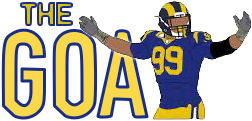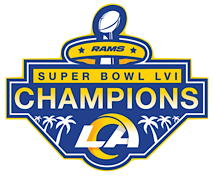Advocating for safer working conditions is a core job of our union, and there are few greater examples of this than raising the standards of the fields we practice and play on.

nflpa.com
November 12, 2022
Advocating for safer working conditions is a core job of our union, and there are few greater examples of this than raising the standards of the fields we practice and play on.
Week after week, we have heard players sound off on the need to improve our fields, too often after a player suffers an injury. This week, we have seen the NFL PR machine go into overdrive to spin a more favorable narrative to what the union and players know is a problem.
If the NFL is serious about their claims that they make data-based decisions and that they care about player safety, then we have some actionable items for them.
1. The Immediate Replacement and Ban of all Slit Film Turf
Just like there are different types of grass, there are also different types of turf (Monofilament, Dual fiber, Slit film). The slit film playing surface has statistically higher in-game injury rates compared to all other surfaces for each of the following:
- Non-contact injuries
- Missed time injuries
- Lower extremity injuries
- Foot and ankle injuries
There are currently seven teams that use slit film in their stadiums (New York Giants, New York Jets, Detroit Lions, Minnesota Vikings, New Orleans Saints, Indianapolis Colts, and Cincinnati Bengals).
The NFL and its experts have agreed with this data and acknowledge that the slit film field is less safe. Player leadership wrote a letter to the NFL this week demanding the immediate removal of these fields and a ban on them going forward, both in stadiums and for practice fields. The NFL has not only refused to mandate this change immediately, but they have also refused to commit to mandating a change away from slit film in the future at all.
The injuries on slit film are completely avoidable -- both the NFL and NFLPA experts agree on the data -- and yet the NFL will not protect players from a subpar surface.
2. No longer allowing games to be played on fields with clear visual abnormalities
Too often we see fields with clear issues that pose an increased risk to the players. Most recently, we saw the field in Tottenham that had a giant uneven seam right above the numbers. We should not be playing on anything but the best-quality playing surfaces. We saw this in Chicago and Las Vegas during the preseason as well, with chunks of grass torn up. This is an embarrassment.
The NFL might be quick to say something like, “those fields have passed their mandatory inspections.” While, again, this is a great PR spin, it does not address the need for safety improvements.
3. For players, it means we need to raise the field standards and test the safety and performance of all field surfaces.
The current mandatory field practices (or “MPs”) only evaluate the maintenance condition of the surface. This includes surface hardness. These standards are more than 13 years old. The results tell you nothing about how safe it is to play on the field.
We need to accelerate the joint development of new performance and safety standards that can be used to test every single field. The good news is that the NFLPA and NFL are currently engaged in research to, for the first time, establish these standards.
Until we have those standards in place, the NFL needs to be much more conservative when we have visible issues with the fields. The current field inspections do not account for performance and safety, so we should stop saying that these fields are safe to play on based on the fact they passed said inspection.
4. Clear the excess people and dangerous equipment from the sidelines
We have seen too many injuries because of this issue, and it really should be a simple fix. Give the players their space to perform. Year after year, the NFL tells us they will look into it; and year after year, nothing ever changes.
The players are frustrated. We simply want a safer workplace.
The NFL has an obligation to provide the safest work environment possible. They are not living up to that standard.
We play one of the most dangerous sports in the world; it shouldn’t be more dangerous because the clubs won’t do anything to remove the simple injury risks on practice and playing surfaces. If the league wants to actually use data to drive its decisions, then do it already. We’ve been waiting for years for some of these changes.
As players, we have a simple message for the league: stop with the lip service, stop with the media spin, stop pretending you care. And if you actually do care, take the actionable steps to fix the problems our union has identified, especially those issues you actually agree with.






